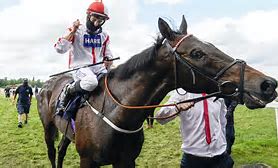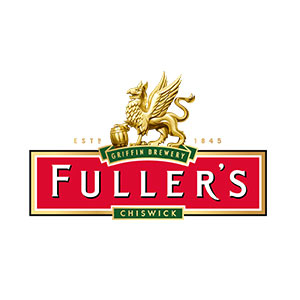Who Dares Wins victory in the closing race of this year’s Royal Ascot has only confirmed what many shrewd racewatchers have clocked already; Alan King’s Barbury stable is a force to be reckoned with at Flat racing’s top table. When was the last time a so-called Jumps trainer enjoyed 3 winners at Britain’s most prestigious fixture? Truly, to label Alan solely as a Jumps trainer now is to misunderstand the versatile nature of this successful dual-purpose yard.

Three winners over the week underline the strength of Barbury’s leading handler under both codes, but are also a welcome reminder that this patch of the Marlborough downs has always been a perfect testing ground for top flight horses at any distance.
Barbury and the wider Wroughton area has form in the top races at Ascot. Whilst this has been a week to remember for the master of Barbury Castle, quadrupling his Royal Ascot record with Coeur de Lion and Scarlet Dragon in the Duke of Edinburgh alongside Who Dares Wins, Barbury has been a happy hunting ground for Flat winners as far back as Brown Jack in the twenties and thirties.
A remarkable horse, Brown Jack was sold to Aubrey Hastings and ran over hurdles and subsequently on the Flat for Ivor Anthony, trained on Burderop Hill. His record illustrates that the fastest horses are able to compete against the best whatever the code. Bought as a Champion Hurdle contender, Brown Jack’s career includes 25 wins over 8 years. He completed the Champion Hurdle objective in 1928, before reeling off a remarkable string of Flat performances, including six consecutive victories in the Queen Alexandra between 1929-34. For good measure, he is also a winner of the Ascot Stakes won by Coeur de Lion, in 1928. That makes seven consecutive victories at the Royal meeting.
When Coeur de Lion ran on to beat Lambourn’s Verdana Blue in the 2m4f Ascot Stakes on Tuesday, the only real surprise was his generous 16/1 price. After all, 9 of the horses in the 19 runner field were trained by handlers equally at home over the sticks.
Since 2011, this long distance stayers race – the third of 3 races over 2m at the Royal Meeting, has been won by a jumps trainer on no less than 8 occasions. Irishman Willie Mullins, who is at home in Hong Kong as much as at Tipperary, has won 4 times with different horses, whilst Nicky Henderson, Jonjo O’Neill and Charles Byrnes are always to be respected when they venture across codes to have a tilt at the Flat.
In fact, Jumps trainers with dual licences have an enviable record at the richest racing fixture in Britain. Gordon Elliott, more at home in a windcheater than top hat & tails, has won the longest race of the meeting twice in recent years. The Queen Alexandra Stakes, at 2m6f, was added to his CV with Commissioned in 2016 and Pallasator two years later. The ubiquitous Willie Mullins has also enjoyed success in this race with Simenon in 2012 and Pique Sous in 2014.
But if the leading Flat trainers think Jumps trainers presumptuous in tilting at the smartest prizes in Britain’s Flat calendar, they have become as guilty of harvesting the top prizes in the Jumps calendar too. Before Kribensis won the Champion Hurdle in 1990 under Richard Dunwoody, notching up his second Festival victory, Flat runners at the home of National Hunt racing were virtually unknown. In the intervening 30 years, the crossover between the two codes at the big meetings has grown, in part due to attractive prize funds, and in part due to the sheer craic of being part of the big event.
When Joseph Patrick O’Brien walked back to greet his winner of the Fred Winter in 2019, he was joining an ever-lengthening roster of able dual purpose handlers looking to compete at the top level, immaterial of the code, to satisfy owners looking for that unique top level winner that takes place in front of a massive crowd. And who can blame them? Not only are the prizes mouth-watering, but the feeling of inclusion at the top table that a runner at a big meeting engenders swamps any achievement felt through pot-hunting at sparsely-attended mid-week events.
Increasingly, ownership of horses is an experience-led business, and trainers like Willie Mullins and Alan King have recognized this. Whether taking on the French in their own backyard, or, as François Doumen did so successfully with jumpers at the big British events, but also across the world with Flat horses, ownership is less about the money (although for globetrotters this always tends to be attractive), than about the ambiance of the occasion – the feeling of being a big fish in a small pond.
There are lessons here for those of us who run Point-to-Point fixtures. We share a responsibility to make the ownership experience as exciting as possible, especially for yards not populated by owner-riders.
Lesson learnt.







